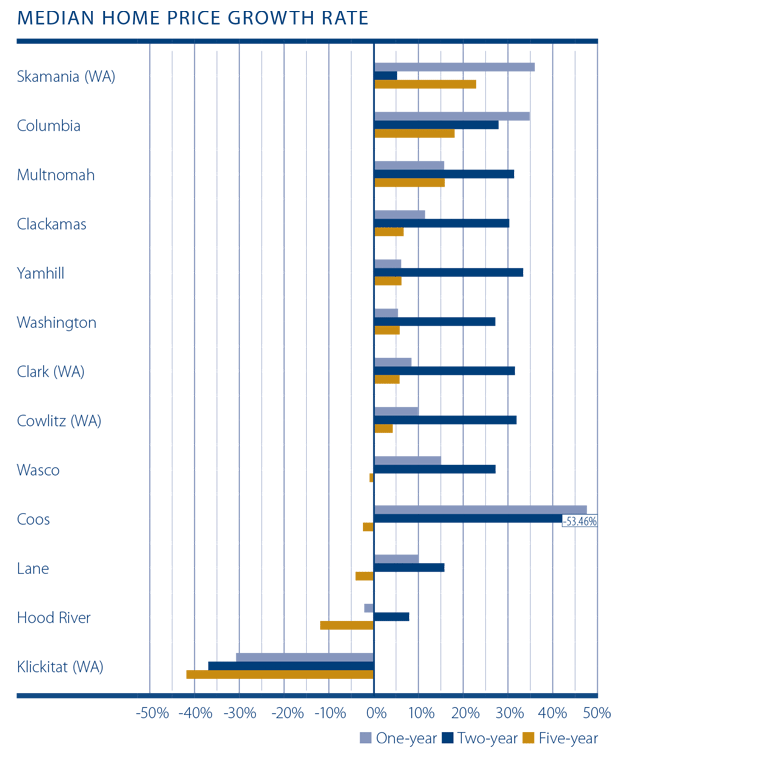Windermere Real Estate is proud to partner with Gardner Economics on this analysis of the Oregon and Southwest Washington real estate market. This report is designed to offer insight into the realities of the housing market. Numbers alone do not always give an accurate picture of local economic conditions; therefore our goal is to provide an explanation of what the statistics mean and how they impact the Oregon and Southwest Washington housing economy. We hope that this information may assist you with making an informed real estate decision. For further information about the real estate market in your area, please contact your Windermere agent.
Regional Economics
From a job growth perspective, numbers for the end of the first quarter showed a vast majority of the counties contained within this report having added to their job bases over the past 12 months rather nicely.
In aggregate, the market has added 32,621 jobs over the past four quarters which represents an annual growth rate of 1.9 percent. For comparison purposes, the state as a whole grew by 2.9 percent, but the U.S. expanded by a more modest 1.64 percent.
Even though the growth was less robust than seen in Oregon as a whole, we were impressed that the growth crossed all major industry sectors. This is an important fact as it suggests that the job recovery is not limited to lower paying, service jobs but has become broad-based and, therefore, sustainable.
Compared to the end of the first quarter of 2013, growth was most robust in Washington County, which added 8,800 jobs (+3.3%). This was followed by Clark County (+3%), and Klamath, Cowlitz, and Deschutes Counties, each increasing their employment base by 2.5 percent.
When compared to March of 2013, job losses were extremely modest and seen in just three counties. Lincoln County lost 70 jobs while Skamania and Klickitat Counties lost just 20 jobs, respectively. In my last report I suggested that the region should add 35,000 jobs in 2014. With the current annual growth of 32,600 jobs, we appear to be squarely on track.
The unemployment rate continues to drop with every county—other than
Benton—seeing unemployment rates lower than a year ago. We should note that Benton County did not see its rate rise, rather it remained static at a still-fairly-respectable six percent.
That said, I would taper all this enthusiasm with the fact that there are still several counties where the unemployment rate remains stubbornly above 10 percent. In as much as I would like to attribute this to an expanding labor force, this is not the case. Generally, these counties represent areas where there is little economic diversity, which is slowing their recoveries. Still, I am hopeful that they will start to see their unemployment rates drop as we move through 2014.
Although the counties shown here have, generally, seen improvements in their respective job markets, several have seen a slowdown in the first quarter when compared to the end of 2013. However, this is not unusual. County-level data is not seasonally adjusted, which makes direct comparisons to the previous quarter somewhat erroneous. Even with any perceived slowdown, I am still raising the grade to a “C+” from the “C’ grade given at the end of 2013.
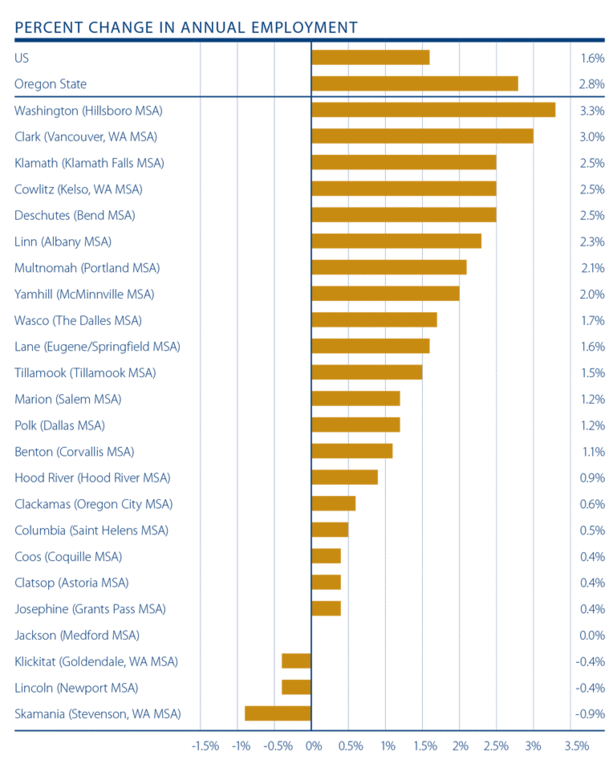

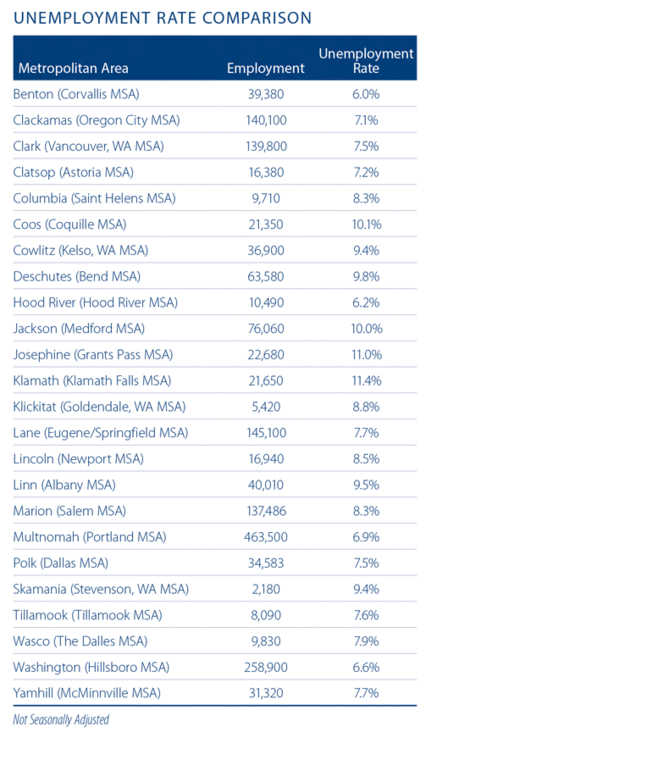
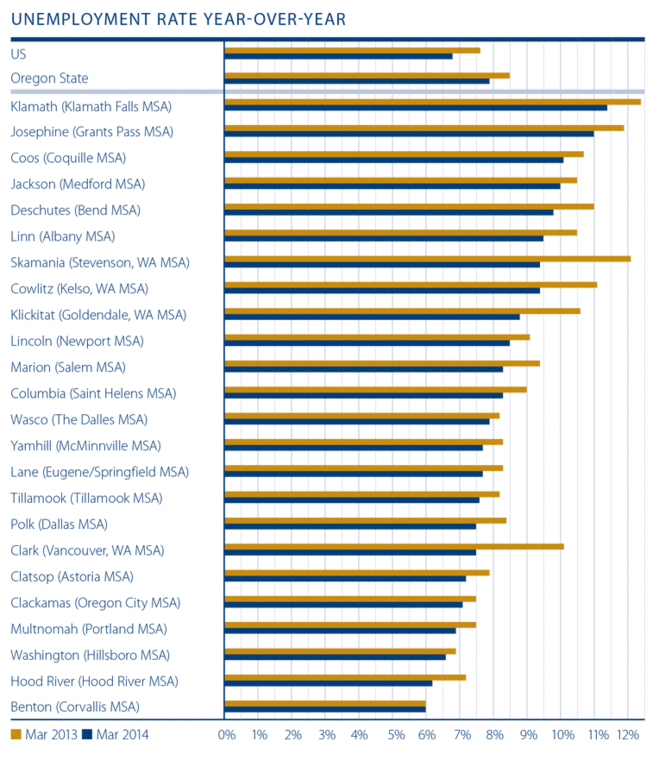
Regional Real Estate
The housing market showed a fairly substantial deviation in the first quarter of the year which is worthy of discussion. On the positive side, price growth was quite impressive and generally broad-based; however, this was offset with a somewhat counterintuitive drop in sales activity.
Any hopes of a spring “bump” in sales were eroded by the fact that total listings dropped by five percent when compared to a year ago. It is clear that lower listing activity has started to have a pronounced effect on the market, but that said, it has yet to translate into any real effect on sale prices.
Listings grew at the fastest rate in Cowlitz County where total listings were up by 6.5 percent year-over-year. The only other counties that saw an increase in listings were Klickitat County (+3.2%) and Clark County (+0.5%).
With the lower level of inventory, home sales took a hit in early spring and were two percent lower in the first quarter of this year when compared to a year ago. In total, the quarter saw a total of 6,392 sales—down from 6,524 in the first quarter of 2013.
Compared to the first quarter of 2013, sales rose in just two counties, with Cowlitz County up by 7.6% and Multnomah County growing by 1.9%. Declines were widespread, with the largest drops seen in Hood River (-17.5%), Skamania (-16.7%), and Klickitat (-13.6%) Counties.
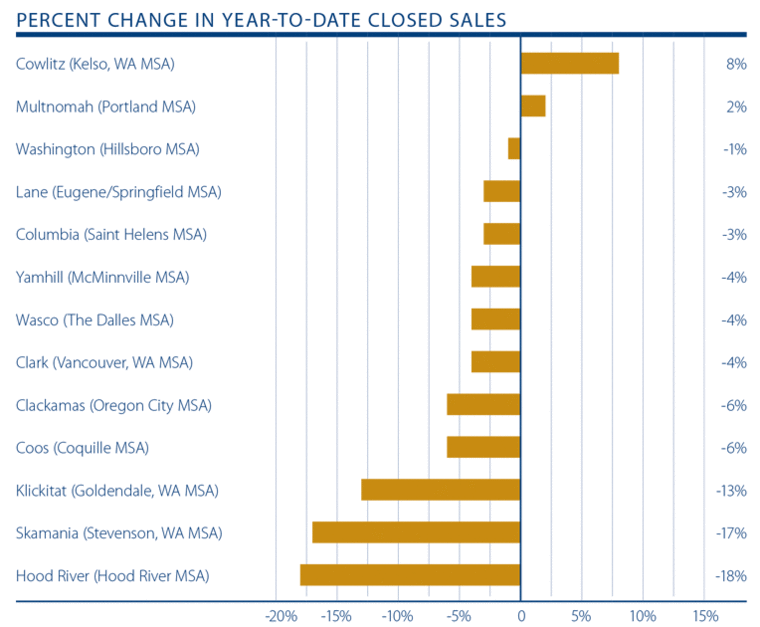

It might seem that the drop in sale activity would have a negative impact on prices; however, this was not the case. When we looked at home prices, the picture was generally bright, with 11 counties showing home values above those seen in the first quarter of 2013, and six registering double-digit growth. In total, the markets surveyed saw average home prices rise from $255,508 to $285,091—an increase of a healthy 11.6 percent. Compared to the fourth quarter of 2013, sale prices have risen by 2.9 percent.
We continue to see some very impressive price gains in smaller counties; however, prices in these markets tend to move erratically due to the limited number of home sales. In Coos County, for example, prices rose by 48 percent year-over-year (from $125,000 to $184,667). Other counties that saw large increases in average sale prices were Skamania (+36%) and Columbia (+35%).
There were just two counties where prices fell. Klickitat County saw the greatest drop in value compared to a year ago (-30.7%), but we again attribute this to the fact that it is a small market. The other market where prices dropped was Hood River (-2.1%).
On a positive note, just one county—Klickitat—is showing home values that are below those seen two years ago. Additionally, over half of the counties surveyed saw home prices in the first quarter exceed those seen in early 2009. This is important, as it was at that time that the market started to see a major decline in values.
Home prices are certainly influenced by the number, quality and mix of homes that are being offered for sale. Many times, markets with limited supply demonstrate stronger price growth than markets where inventory is less tight. However, the drop in sales as well as listing activity, although nothing to panic about, does give us pause for thought and may lead to slower price appreciation unless we start to see more activity.
As such, I am maintaining the “C+” grade that I have given this market for the past year.
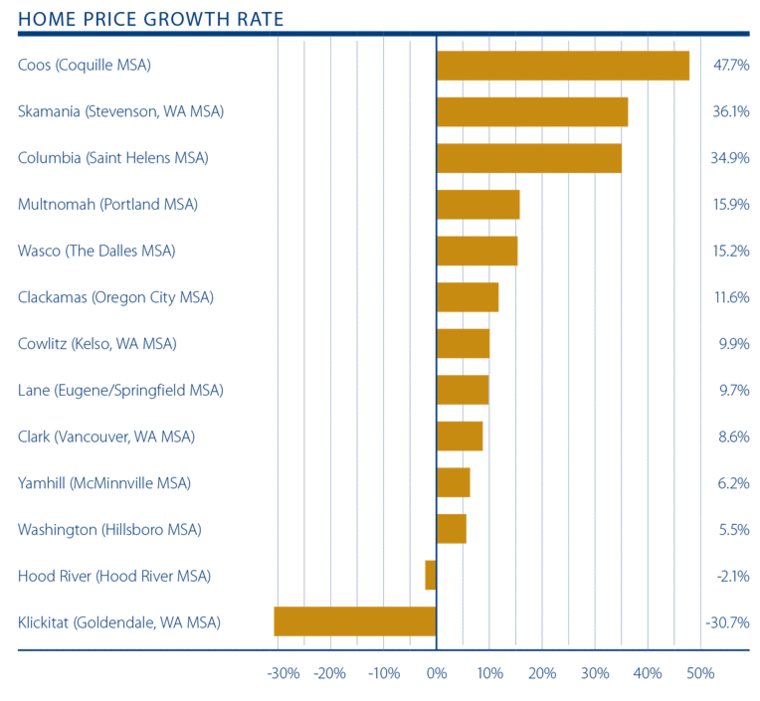

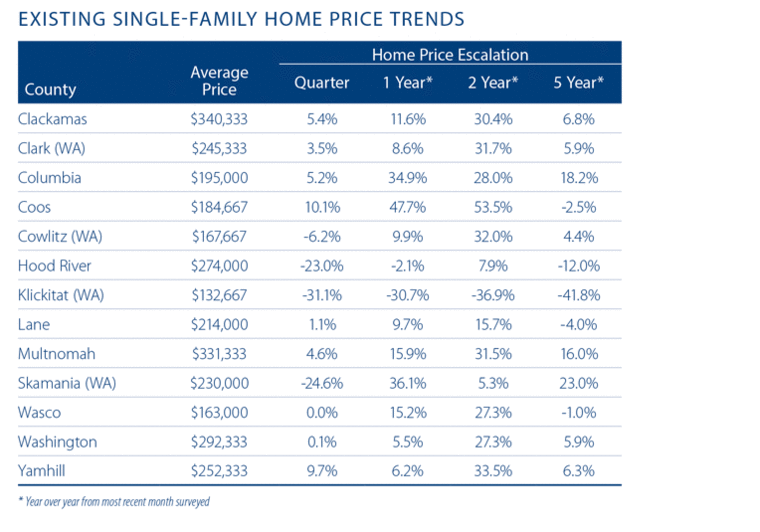
Conclusions
On a whole, Oregon’s economy is starting to perform well, with seasonally adjusted employment growing by 46,300 jobs over March of 2013.
In the markets covered by this report, employment growth has not been as robust, but is still— on a percentage basis—higher than that seen in the U.S. as a whole. It is also pleasing to see that employment growth is not limited to service sector industries (which are generally lower paying), which bodes well for the housing market.
As discussed earlier, the housing market itself is somewhat contradictory. Prices are, on the whole, higher than those seen a year ago and in the fourth quarter of 2013. That said, the boost in inventory that I was hoping to see this quarter did not occur.
As predicted, interest rates are moving modestly higher and we are standing by our forecast that the year will end with average 30-year fixed rates marginally below five percent. The upward move in rates continues to get prospective buyers off the fence, but they are still faced will little in the way of choice in homes to buy.
I remain hopeful that the region will start adding to its supply of homes for sale, but it will take a dramatic rise during the balance of the year for me to start believing that the market is heading toward equilibrium.
About Matthew Gardner
 Mr. Gardner is a land use economist and principal with Gardner Economics and is considered by many to be one of the foremost real estate analysts in the Pacific Northwest.
Mr. Gardner is a land use economist and principal with Gardner Economics and is considered by many to be one of the foremost real estate analysts in the Pacific Northwest.
In addition to managing his consulting practice, Mr. Gardner chairs the Board of Trustees at the Washington Center for Real Estate Research at the University of Washington; sits on the Urban Land Institutes Technical Assistance Panel; is an Advisory Board Member for the Runstad Center for Real Estate Studies at the University of Washington; and is the Editor of the Washington State University’s Central Puget Sound Real Estate Research Report.
He is also the retained economist for the Master Builders Association of King & Snohomish Counties. He has twenty-five years of professional experience in the U.K. and U.S.
He has appeared on CNN, NBC and NPR news services to discuss real estate issues, and is regularly cited in the Wall Street Journal and all local media.
 Facebook
Facebook
 X
X
 Pinterest
Pinterest
 Copy Link
Copy Link
